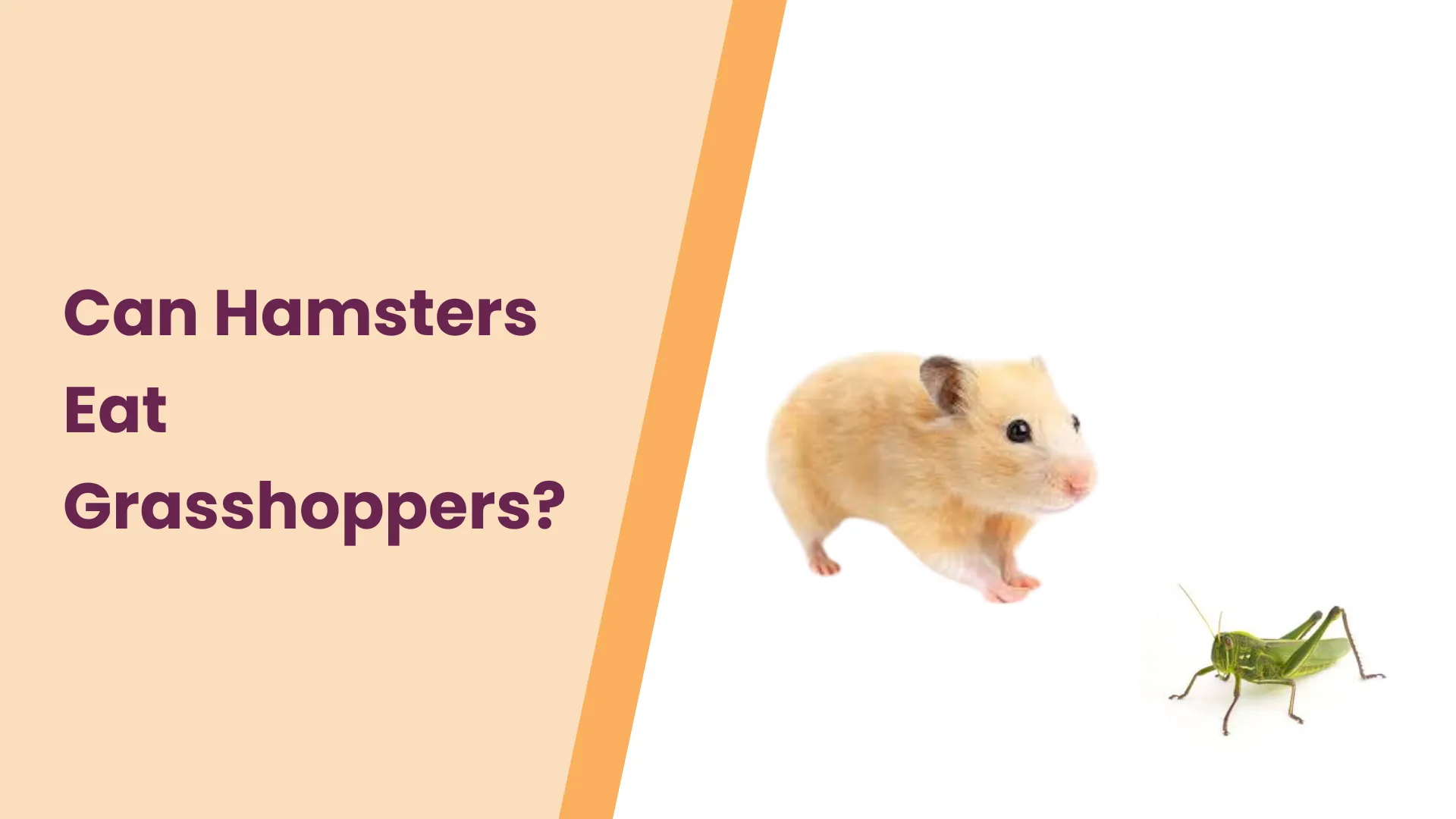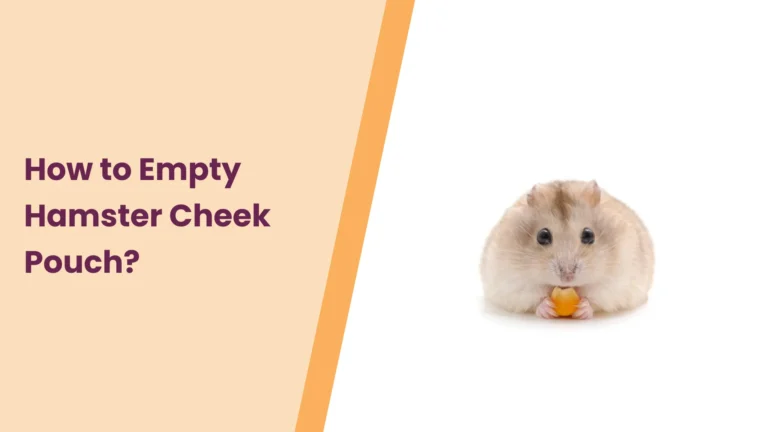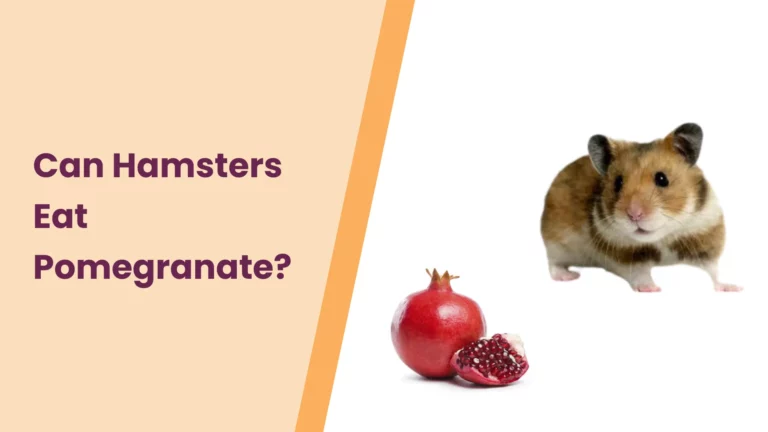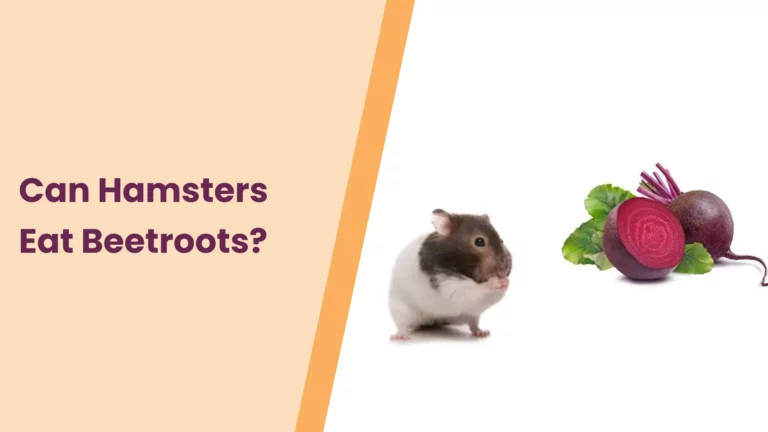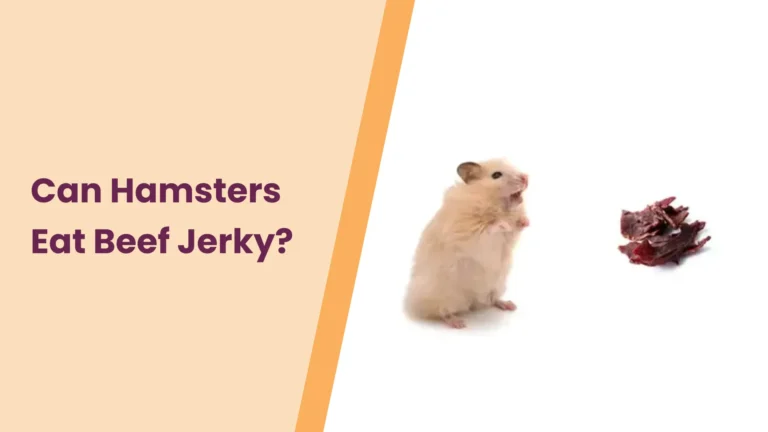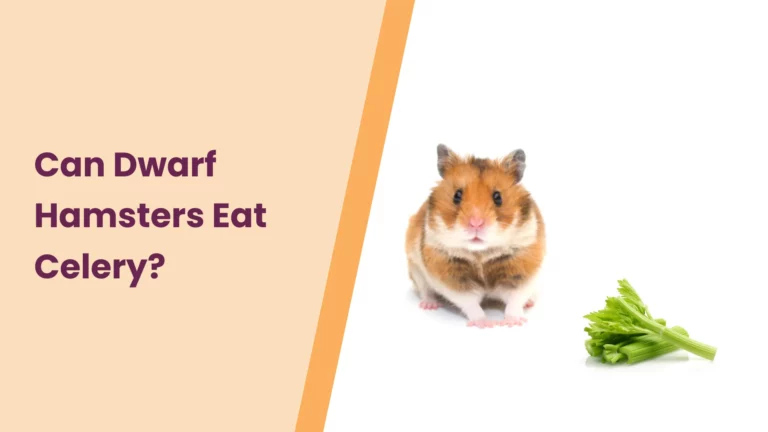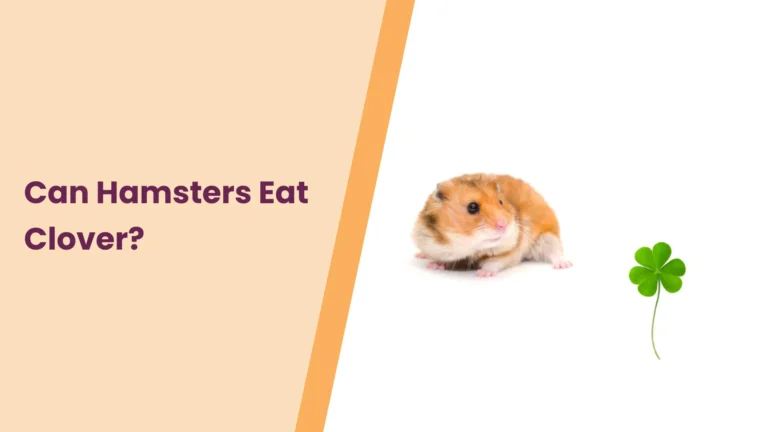Can Hamsters Eat Grasshoppers?– All You Need To Know
Welcome to the wonderful world of hamster care, where every owner strives to provide their tiny companions with the healthiest and most enjoyable life possible. If you’ve ever wondered about expanding your hamster’s culinary horizons, you’ve likely asked, “Can hamsters eat grasshoppers?” In this exploration of hamster nutrition, we dive into the intriguing realm of introducing these lively insects into your furry friend’s diet. As we embark on this insectivorous journey, let’s unravel the nutritional puzzle and discover whether grasshoppers can be the next tasty addition to your hamster’s menu. After all, a well-fed hamster is a happy hamster, and we’re here to guide you every hop of the way!
Understanding Hamster Dietary Needs
Hamsters, those pocket-sized bundles of energy and curiosity, have dietary needs as unique as their personalities. Ensuring a well-balanced diet is not just a nicety but a cornerstone of their overall well-being. These adorable rodents thrive on a mix of grains, fruits, and vegetables, complemented by protein sources that mimic their natural diet in the wild. Understanding the nuances of their dietary requirements is key to fostering a healthy and happy hamster.
When crafting a menu for your furry friend, consider the essential nutrients they require. Hamsters, being omnivores, benefit from a blend of proteins, fats, and carbohydrates. Protein, especially, is crucial for their growth, energy, and maintaining a luscious coat. Seeds, nuts, and commercially available hamster pellets are excellent protein sources that cater to their dietary needs.
While hamsters enjoy nibbling on fruits and vegetables, moderation is key. Too many sugary or watery treats can lead to health issues, including obesity and diabetes. Striking a balance between grains, fresh produce, and protein-rich foods is the secret sauce to a well-rounded hamster diet. Keep in mind that hamsters have individual preferences, so observing their reactions to different foods helps tailor their diet to suit their tastes and nutritional requirements.
Nutritional Value of Grasshoppers
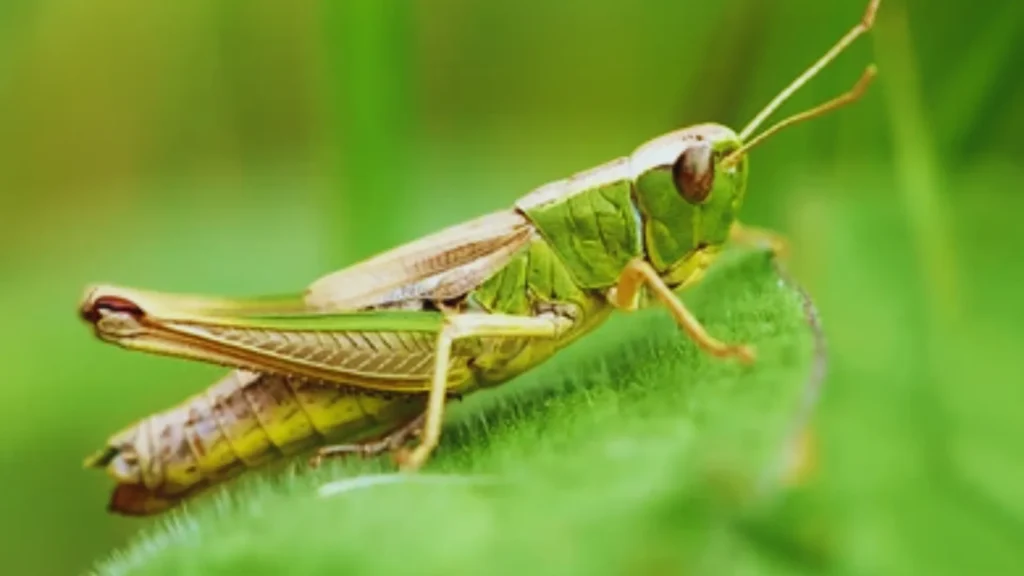
Enter the miniature world of hamster nutrition, where every morsel plays a crucial role in their well-being. As we consider expanding our hamster’s palate, let’s take a closer look at the tiny but mighty grasshopper.
Grasshoppers, those agile leapers of the insect realm, pack a nutritional punch that might surprise you. Rich in protein, healthy fats, and essential vitamins, they present a tantalizing option to enhance your hamster’s diet. Protein, a cornerstone for hamster growth and vitality, is abundant in grasshoppers, making them a natural candidate for a protein boost.
Beyond protein, grasshoppers offer a spectrum of nutrients essential for your hamster’s health. They are a source of unsaturated fats, promoting a shiny coat and overall cardiovascular well-being. Additionally, grasshoppers are laden with vitamins such as B-complex vitamins and minerals like iron and zinc, adding layers of nutritional goodness to their tiny frames.
While the nutritional content of grasshoppers is undeniably impressive, it’s crucial to approach their inclusion in your hamster’s diet with care. In the following sections, we’ll delve into the potential benefits and considerations, ensuring a well-informed decision as you navigate the culinary landscape for your beloved hamster companion.
Risks and Considerations
As we tread the path of introducing grasshoppers into your hamster’s diet, it’s crucial to navigate with a discerning eye. While these leaping insects boast impressive nutritional credentials, a responsible approach is paramount. Let’s explore the potential risks and considerations that come with incorporating grasshoppers into your hamster’s culinary repertoire.
1. Moderation is Key:
One of the cardinal rules of hamster care is moderation. While grasshoppers offer a wealth of nutrients, an excess can tip the balance and lead to potential health issues. Keep a keen eye on portion sizes, ensuring that grasshoppers complement rather than dominate your hamster’s overall diet.
2. Allergic Sensitivities:
Just like humans, hamsters can exhibit allergic sensitivities to certain foods. Before introducing grasshoppers, observe your hamster for any signs of adverse reactions, such as changes in behavior, digestion, or appearance. If you notice any unusual symptoms, it’s wise to consult with a veterinarian promptly.
3. Health Conditions and Individual Variability:
Hamsters, like any living being, have unique health profiles. Certain health conditions or individual sensitivities may influence how well your hamster tolerates new additions to its diet. Factors such as age, breed, and pre-existing health conditions should be considered when contemplating the introduction of grasshoppers.
4. Avoid Harmful Pesticides:
If you decide to offer your hamster fresh grasshoppers, ensure they come from a reliable and pesticide-free source. Harmful pesticides can pose a significant risk to your hamster’s health, so sourcing clean and safe grasshoppers is paramount.
5. Consult with a Veterinarian:
Before making significant changes to your hamster’s diet, it’s always prudent to seek professional advice. Consult with a veterinarian who can provide personalized guidance based on your hamster’s specific needs and health status.
How to Introduce Grasshoppers to a Hamster’s Diet
Embarking on the adventure of incorporating grasshoppers into your hamster’s culinary experience requires a thoughtful and gradual approach. Ensuring a smooth introduction involves a mix of preparation, observation, and a dash of patience. Here’s a step-by-step guide to bringing grasshoppers to the hamster banquet:
1. Gradual Introduction:
Like any new food, introduce grasshoppers gradually into your hamster’s diet. Begin with small, bite-sized portions and monitor your hamster’s response. A slow introduction allows their digestive system to acclimate to the new protein source.
2. Preparation Methods:
Consider various preparation methods to make grasshoppers more palatable for your hamster. Drying or freezing grasshoppers can enhance their shelf life and alter the texture, making them more appealing to your furry friend. Experiment to see which preparation method suits your hamster’s taste.
3. Observation is Key:
As you introduce grasshoppers, keen observation is your greatest ally. Watch for changes in behavior, energy levels, and overall well-being. If your hamster shows signs of discomfort or reluctance, it may be an indicator to adjust the quantity or frequency of grasshopper treats.
4. Monitor Digestive Health:
Keep a close eye on your hamster’s digestive health during the introduction phase. Ensure they are not experiencing any gastrointestinal distress, such as diarrhea or constipation. If any issues arise, scale back on the grasshopper treats and consult with your veterinarian if needed.
5. Variety is the Spice of Life:
While grasshoppers can be a nutritious addition, it’s crucial to maintain a diverse diet. Ensure your hamster receives a mix of grains, fruits, vegetables, and other protein sources to guarantee a well-rounded nutritional intake. Variety not only contributes to their health but also keeps mealtime exciting for your curious companion.
Alternatives to Grasshoppers
While the prospect of introducing grasshoppers to your hamster’s diet is intriguing, it’s equally important to explore a spectrum of alternatives to keep their meals diverse and enjoyable. Here’s a roundup of protein-packed alternatives that will cater to your hamster’s nutritional needs and tickle their taste buds:
1. Mealworms:
Tiny, wriggly, and protein-rich, mealworms are a favorite among hamsters. These bite-sized treats can be offered fresh or dried, providing a wholesome dose of essential nutrients. Ensure they are sourced from reputable sources to guarantee quality.
2. Crickets:
Crickets are another excellent protein source for your hamster. Like grasshoppers, they offer a crunchy texture that hamsters may find delightful. Consider offering small, appropriately-sized crickets to avoid overwhelming your furry friend.
3. Pumpkin Seeds:
For a plant-based protein boost, pumpkin seeds are a fantastic option. Packed with protein, healthy fats, and essential minerals, they add nutritional value while offering a satisfying crunch. Ensure they are unsalted and served in moderation.
4. Hard-Boiled Eggs:
A kitchen staple, hard-boiled eggs are a versatile and protein-packed addition to your hamster’s diet. Chop them into small pieces and offer them as an occasional treat. Eggs provide a protein source that also contains essential amino acids.
5. Yogurt Drops:
For a change of pace, consider yogurt drops as a delightful treat. Rich in protein and calcium, these drops are not only tasty but also contribute to dental health. However, use them sparingly due to their sugar content.
6. Commercial Hamster Treats:
Explore the variety of commercial hamster treats available in pet stores. Many of these treats are formulated to meet hamsters’ nutritional needs while offering a range of flavors and textures. Look for treats with high-quality ingredients.
7. Fresh Fruits and Vegetables:
Don’t overlook the simplicity of fresh fruits and vegetables. Apples, carrots, and broccoli florets, when offered in small, hamster-sized portions, can add a burst of flavor and nutrition to their diet.
Remember, variety is the spice of life for hamsters. Rotate these treats, ensuring a well-rounded and exciting menu for your pint-sized companion. In the next section, we’ll conclude our exploration, summarizing the key points and leaving you with the tools to create a nutritionally balanced and enjoyable diet for your hamster.
Conclusion
As we bid adieu to this culinary exploration into the world of hamster nutrition, remember that caring for these pocket-sized companions is both an art and a science. While the question of whether hamsters can eat grasshoppers has been thoroughly dissected, the overarching theme is the importance of balance and variety in their diet.
Incorporating new elements, such as grasshoppers or alternatives like mealworms and pumpkin seeds, can indeed enrich your hamster’s dining experience. However, the golden rule remains moderation and attentive observation. Each hamster is a unique individual with distinct preferences and tolerances.
Whether you’re a seasoned hamster enthusiast or a novice caretaker, consult with your veterinarian and tailor your hamster’s menu to suit their specific needs. With a thoughtful approach, your hamster can thrive on a diet that is not only nutritious but also tantalizingly diverse.
As you embark on this culinary journey with your pint-sized friend, may their meals be as joyful and varied as their spirited personalities. Here’s to the well-being and happiness of your hamster companion!
“Our hamster community thrives on shared experiences, and we’d love to hear from you! Have you introduced grasshoppers or other unique treats to your hamster’s menu? What are your furry friend’s favorite snacks? Share your insights, questions, and anecdotes in the comments below. Your contributions not only enrich our discussions but also create a valuable resource for fellow hamster enthusiasts. Don’t forget to spread the love—share this article with fellow hamster lovers on social media or other platforms. Let’s build a vibrant community dedicated to the well-being and happiness of our tiny, whiskered companions. Your thoughts matter, and together, we can create a hub of knowledge that celebrates the joys of hamster care!”– HamsterPit

